Birds have been captivating people’s hearts for centuries and in the beautiful state of Jammu and Kashmir, they are no exception. This northern Indian state is a paradise for birdwatchers, with a wide array of species to observe.
From the majestic Himalayan Monal to the colourful Black Redstart, the skies of Jammu and Kashmir are filled with a variety of fascinating birds. With an impressive list of over 450 species, bird lovers are sure to find something to captivate them in this picturesque region.
Whether you’re looking to spot rare species, explore new habitats or simply enjoy the beauty of these feathered creatures, there’s something for everyone in Jammu and Kashmir.
1. Himalayan Bulbul
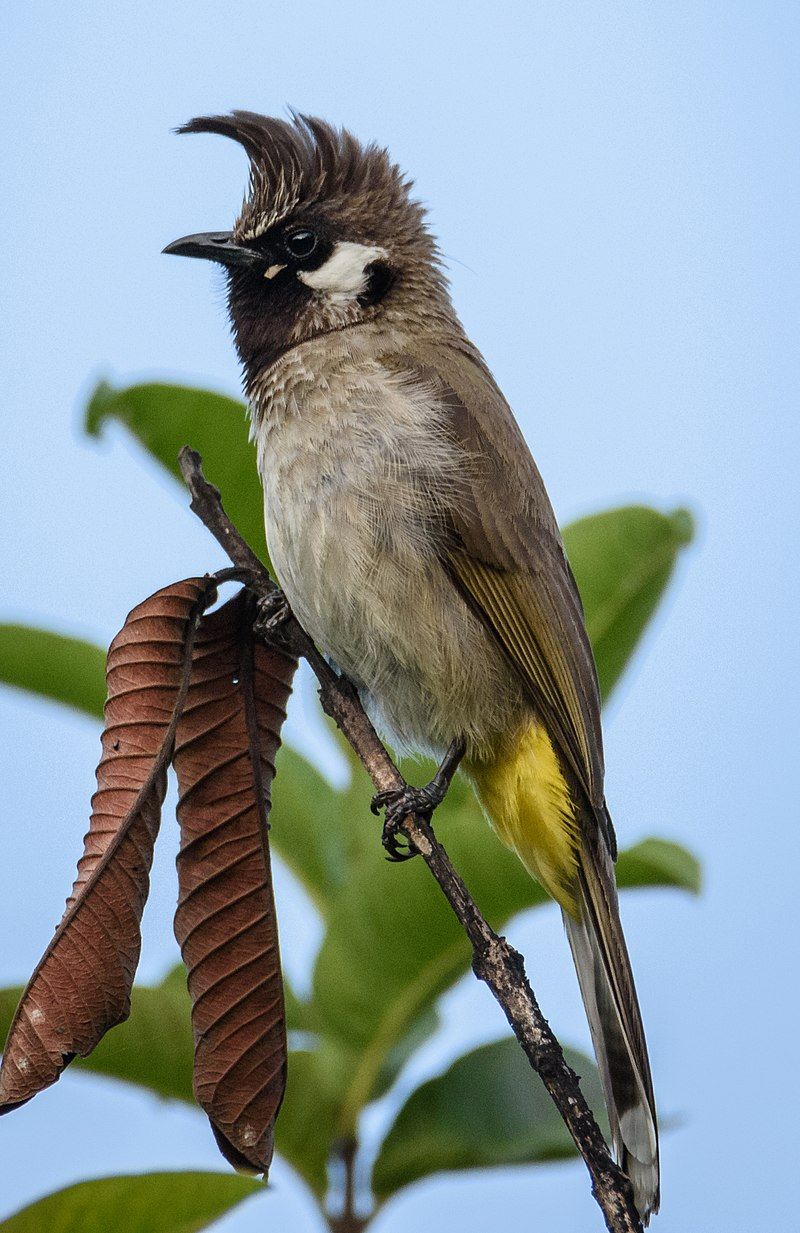
The Himalayan bulbul is a species of songbird belonging to the bulbul family. It is found in Central and South Asia and is easily identifiable by its white cheeks. The bird has a bright green body and a black head and wings.
It has a strong, melodious song, which can be heard during the day and night. The Himalayan bulbul is a popular bird for birdwatchers, as it is easy to spot and is often found in open areas and gardens.
The bird is also a useful source of food for some local people and is hunted for its meat and eggs. Its diet consists mainly of fruits, seeds, and insects.
The Himalayan bulbul is listed as a species of least concern on the IUCN Red List because of its wide distribution and large population. However, it is threatened by habitat loss due to deforestation and the expansion of human settlements.
Conservation efforts are needed to ensure that this species is protected and can continue to thrive in its natural habitats.
| Kingdom | Animalia |
| Phylum | Chordata |
| Class | Aves |
| Order | Passeriformes |
| Family | Pycnonotidae |
| Genus | Pycnonotus |
| Species | P. leucogenys |
2. Black-Necked Crane
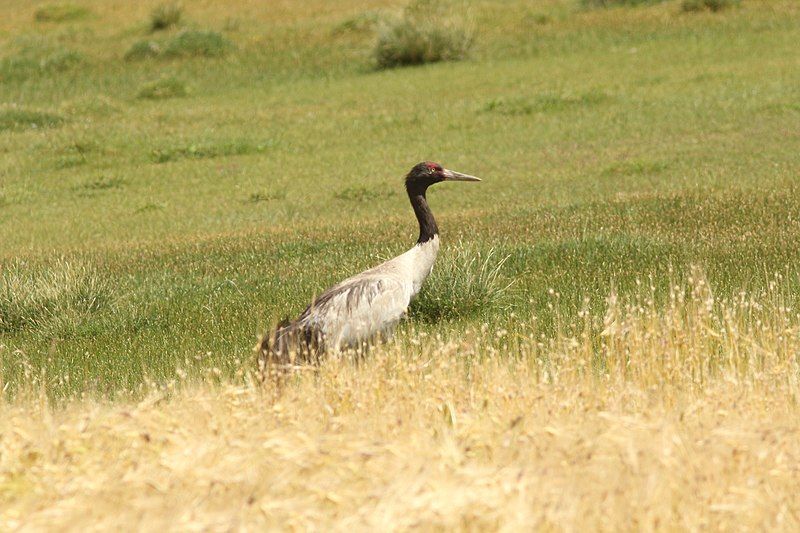
The black-necked crane is a majestic bird that is native to parts of Asia. It is considered a medium-sized crane, measuring 139 cm in length with a wingspan of 235 cm. It also weighs an average of 5.5 kg.
This majestic crane is mostly whitish-gray in color, with a black head and upper neck, a red crown patch, and a white patch behind the eye.
These striking features make the black-necked crane a beautiful and unique bird.The black-necked crane is found mostly in the Tibetan Plateau and in remote parts of India and Bhutan.
It is an important species in these countries, due to its status as a symbol of luck and longevity. This bird is also an important species in the conservation of the wetlands and grasslands of these countries.
It feeds primarily on insects, worms, and small fish, and its population is estimated to be around 10,000 individuals. The black-necked crane is threatened by habitat loss and degradation due to human activities such as logging and development.
It is also vulnerable to poaching and illegal hunting. To protect this species, conservation measures such as protected areas and captive-breeding programs have been put in place.
Additionally, public education and awareness campaigns have been conducted to help raise awareness of this species and its importance.
| Kingdom | Animalia |
| Phylum | Chordata |
| Class | Aves |
| Order | Gruiformes |
| Family | Gruidae |
| Genus | Grus |
| Species | G. nigricollis |
3. Blue Whistling Thrush
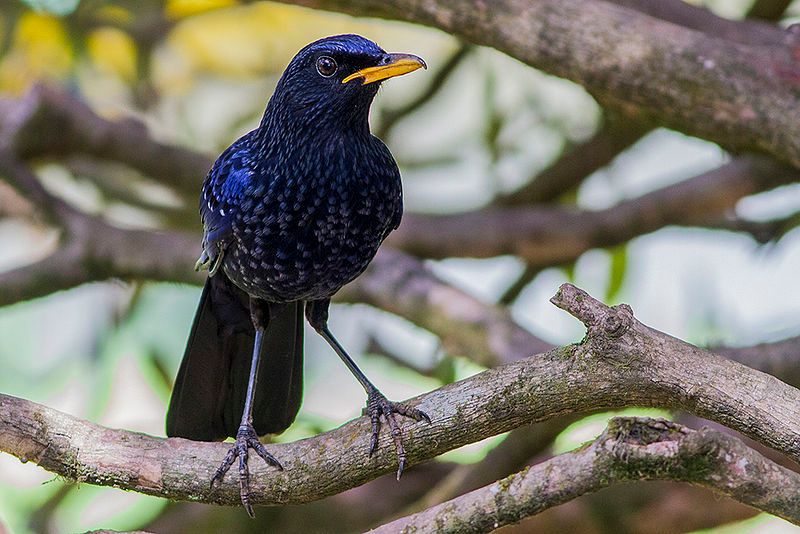
The blue whistling thrush is a species of bird belonging to the family Muscicapidae, which is a part of the Old World flycatchers family. This species is native to the mountains of Central Asia, South Asia, China and Southeast Asia.
It is particularly known for its loud and human-like whistling song that is sung at dawn and dusk. This beautiful song has been described as “the most beautiful song of any bird in Asia” and is a favorite among birdwatchers and ornithologists.
The blue whistling thrush is a medium-sized bird with a length of around 18–20 cm. Its head, neck, breast and upper back are a deep blue-black color, while its lower back and rump are a bright blue-green color.
It has a characteristic white spot on its crown, which is visible when the bird is perched. Another distinctive feature of the blue whistling thrush is its long bill. The bill is slightly curved and is used to catch insects from foliage or the ground.
The blue whistling thrush is a type of insectivore, meaning its main diet consists of insects. However, its diet can also include berries, fruits, and other small animals such as lizards and frogs.
It is usually found in forests, scrublands, and rocky mountainsides, where it can easily find food and shelter. In addition to its beautiful song, the blue whistling thrush is also known for its impressive display of aerial maneuvers.
It can often be seen performing acrobatic displays, such as tumbling, hovering, and swooping in the air. These aerial displays are used to attract a mate and defend territory. The blue whistling thrush is an important species in the avian world.
Its presence in the mountains of Central, South, and East Asia has been recorded for many years and it is an iconic species in these regions.
Conservation efforts are being taken to protect this species and its habitat, and it is currently listed as least concern on the IUCN Red List.
| Kingdom | Animalia |
| Phylum | Chordata |
| Class | Aves |
| Order | Passeriformes |
| Family | Muscicapidae |
| Genus | Myophonus |
| Species | M. caeruleus |
4. Indian Pond Heron
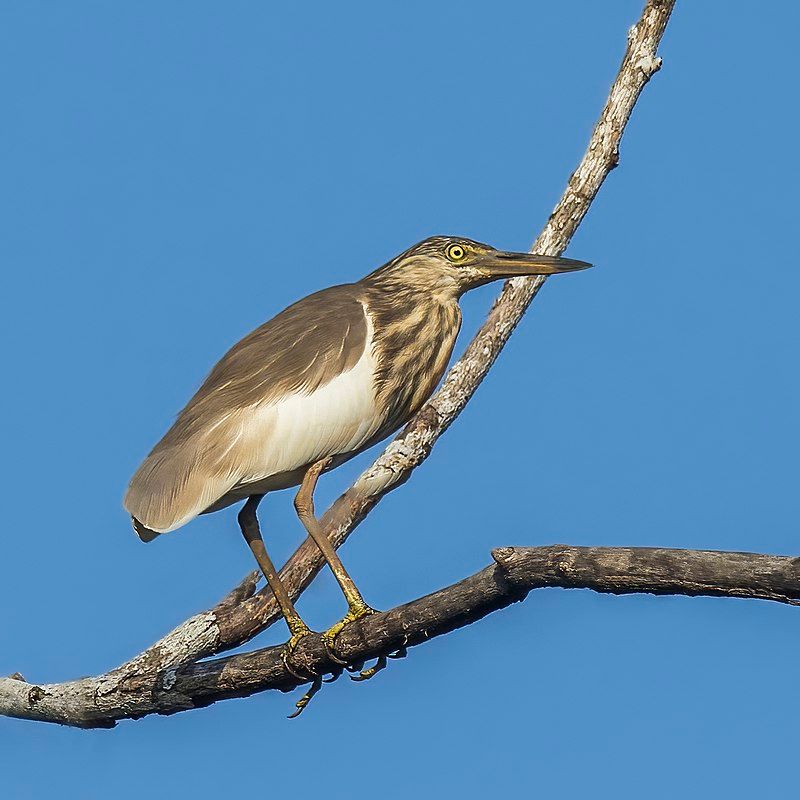
The Indian pond heron, also known as the paddy bird, is a small member of the heron family. It is native to the Old World, which includes parts of Iran, India, Burma, and Sri Lanka.
This species of heron is mostly found in freshwater wetlands and marshes, where they breed during the summer season.
They have a variety of attractive plumage colors, ranging from white to dark grey. The Indian pond heron feeds mainly on fish, frogs, mollusks, insects, and crustaceans. They are known to forage in shallow waters, using their long necks and sharp eyes to spot prey.
They are also quite capable of wading in deeper waters, where they can find larger prey. The Indian pond heron is not a migratory species. They tend to stay in the same area for most of the year, although they may move to different areas during the breeding season.
During this time, they may travel up to hundreds of miles to find a suitable nesting site. The Indian pond heron is an important part of the ecosystem. They help to control the population of fish, frogs, and other aquatic creatures in the aquatic environment.
They also provide food for larger animals like birds of prey and mammals, helping to keep the local food chain balanced.
| Kingdom | Animalia |
| Phylum | Chordata |
| Class | Aves |
| Order | Pelecaniformes |
| Family | Ardeidae |
| Genus | Ardeola |
| Species | A. grayii |
5. Kashmir Nuthatch
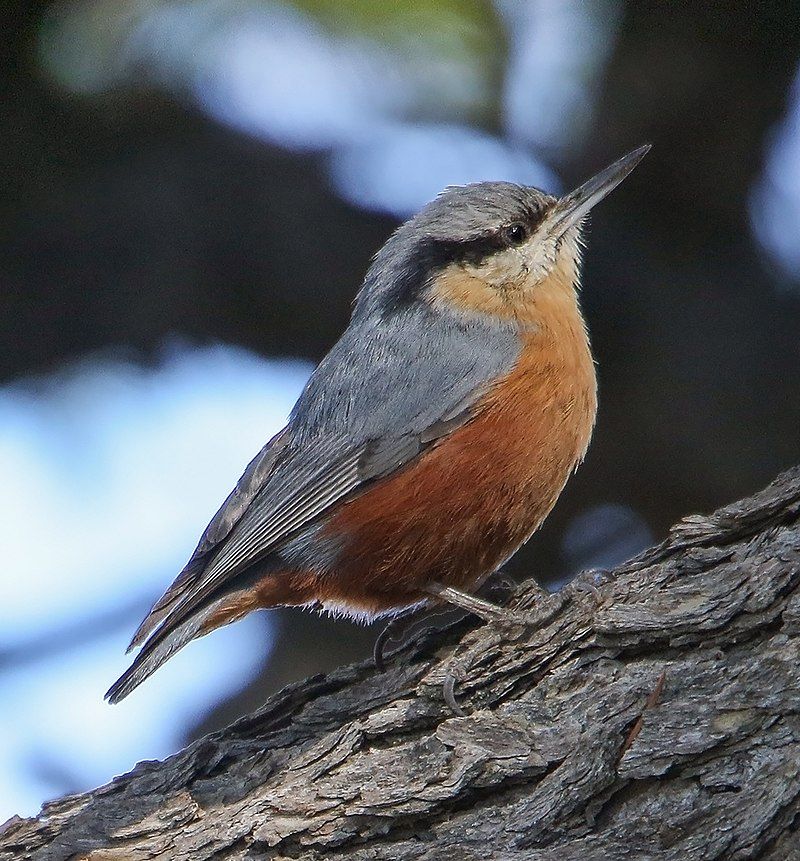
The Kashmir nuthatch is a species of bird belonging to the Sittidae family. It is native to the northernmost parts of the Indian subcontinent, primarily living in the mid-altitudes of the Himalayas.
This species is found in four different countries: Afghanistan, India, Nepal and Pakistan. It is a medium-sized bird, with a brownish-grey back, white belly and reddish-brown head. Its most distinguishing feature is its long, curved bill which it uses for catching insects.
The species feeds mainly on insects, seeds and invertebrates. Its habitat includes deciduous and coniferous forests, along with rocky cliffs and open grasslands. The species is threatened by habitat destruction and pollution and is listed as Near Threatened by the IUCN.
Conservation efforts are underway to protect this species and its habitat, including habitat management and awareness campaigns.
| Kingdom | Animalia |
| Phylum | Chordata |
| Class | Aves |
| Order | Passeriformes |
| Family | Sittidae |
| Genus | Sitta |
| Species | S. cashmirensis |
6. Kashmir Flycatcher
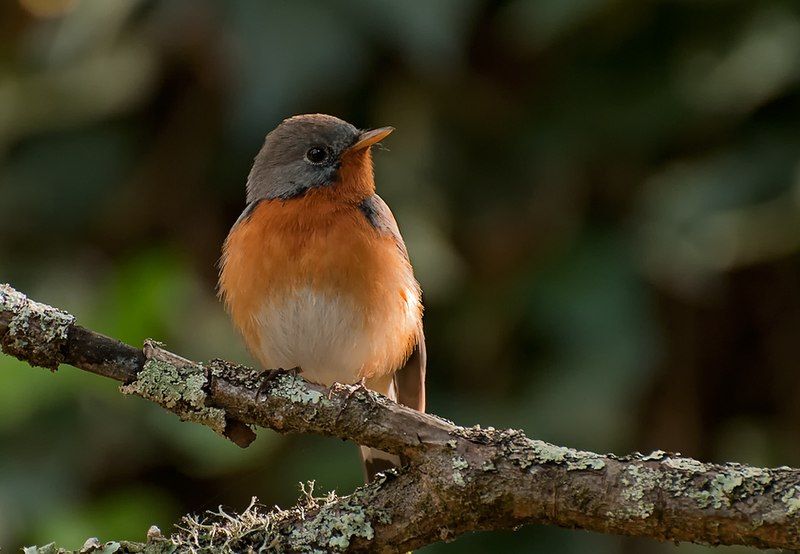
The Kashmir flycatcher is a small species of bird in the Muscicapidae family, which is part of the passerine bird group. It breeds in the Northwest Himalayas, and during the winter months, migrates to southern India and Sri Lanka.
This species is closely related to the red-breasted flycatcher, or Ficedula parva, and in the past, the Kashmir flycatcher was considered to be a subspecies of the red-breasted flycatcher.
This relationship between the two species is evident in their physical characteristics, as well as their behavior. The Kashmir flycatcher is characterized by its light brown plumage and black wings. This species also has bright yellow eyes and a black bill.
Its behavior is similar to that of the red-breasted flycatcher, as it perches on trees and then makes short, fast flights to catch its food. The Kashmir flycatcher primarily feeds on insects, such as flies, wasps, and bees.
This species is an important part of the Himalayan ecosystem, as it helps to control insect populations.
| Kingdom | Animalia |
| Phylum | Chordata |
| Class | Aves |
| Order | Passeriformes |
| Family | Muscicapidae |
| Genus | Ficedula |
| Species | F. subrubra |
7. Himalayan Monal
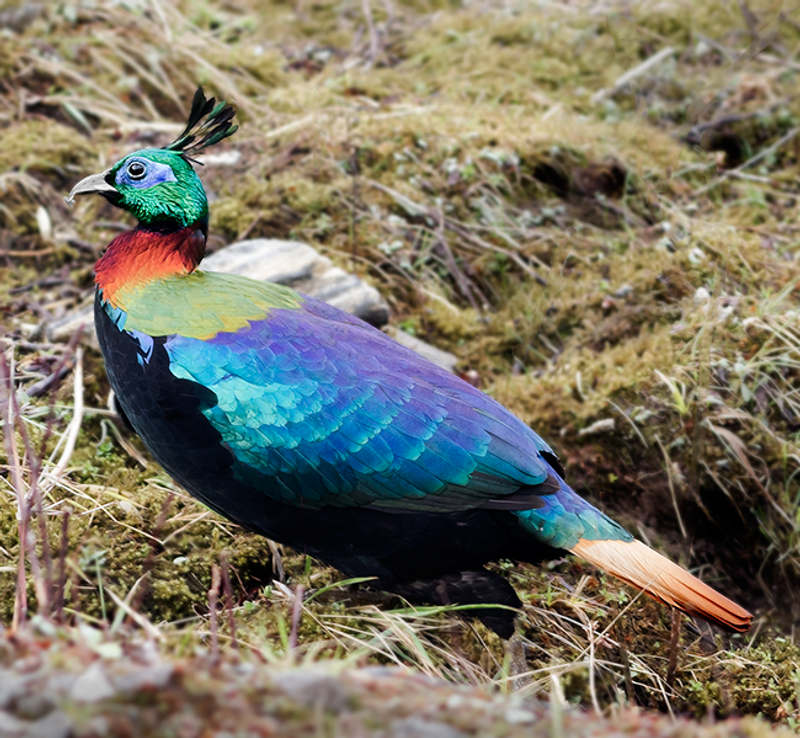
The Himalayan monal, also known as the Impeyan monal or Impeyan pheasant, is a bird that is found in the Himalayan forests and shrublands at elevations ranging from 2,100 to 4,500 meters.
It is part of the family Phasianidae, which includes other pheasants, partridges, and quails.
Due to its wide range, plentiful population, and lack of major threats, it has been classified as Least Concern on the IUCN Red List. The Himalayan monal is considered a large pheasant, with males having a length of up to 78 cm and females up to 58 cm.
The males have striking plumage, with a metallic blue head, a chestnut body, and white underparts.
Females are mainly brown in color. Himalayan monal feed mainly on plant matter, such as seeds, berries, and leaves, but they will also eat small animals, such as insects, frogs, and lizards.
They are usually found in small groups and are known to display a variety of vocalizations. The Himalayan monal is found in India, Nepal, Bhutan, China, and Myanmar. It is a species of least concern, as it has a wide range and a large population.
However, due to the destruction of its habitat by humans, its population has decreased slightly in some areas. Therefore, it is important to protect its natural habitat in order to ensure its continued survival.
| Kingdom | Animalia |
| Phylum | Chordata |
| Class | Aves |
| Order | Galliformes |
| Family | Phasianidae |
| Genus | Lophophorus |
| Species | L. impejanus |
8. Bar-Headed Goose
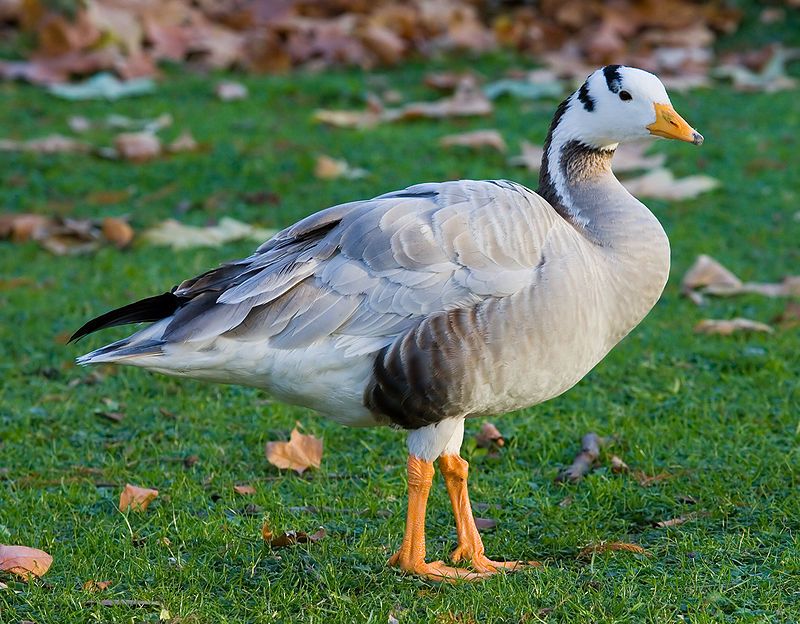
The bar-headed goose is a species of goose that is found in Central Asia. This species breeds in colonies of thousands near mountain lakes, and during the winter months they migrate to South Asia to places as far south as peninsular India.
When nesting, the bar-headed goose typically lays three to eight eggs in a ground nest. This species is most notably known for its incredible ability to reach extreme altitudes during migration, particularly when crossing over the Himalayas.
This is an impressive feat, as the Himalayas are the highest mountain range on Earth. The bar-headed goose is able to fly at heights of up to nine thousand meters, which is an extremely impressive feat for a species of bird.
This species serves as an example of the incredible adaptability of nature, and the lengths which animals will go to in order to survive and thrive.
| Kingdom | Animalia |
| Phylum | Chordata |
| Class | Aves |
| Order | Anseriformes |
| Family | Anatidae |
| Genus | Anser |
| Species | A. indicus |
9. Kalij Pheasant
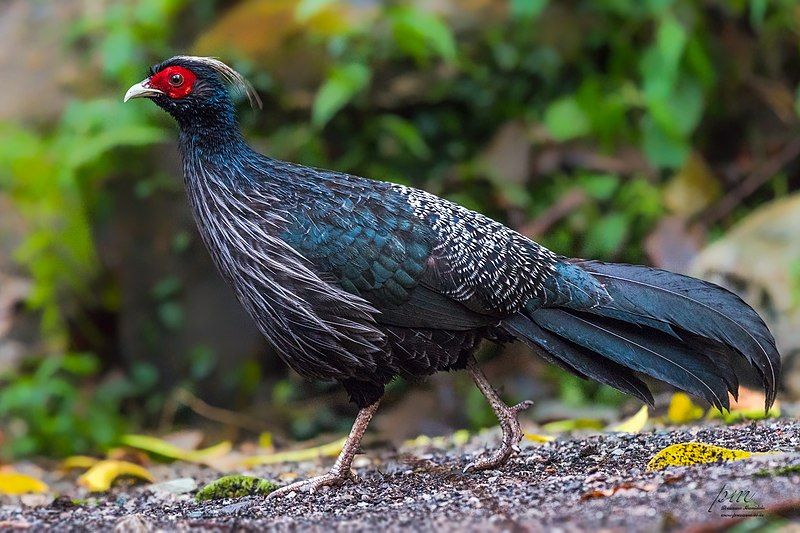
The kalij pheasant is a species of pheasant found in the forests and thickets of the Himalayan foothills. Its range extends from Nepal, Pakistan to western Thailand. There are several different subspecies, each with their own individual characteristics.
The male kalij pheasant is typically glossy and bluish-black in color. The female is instead brownish in plumage. The males of the kalij pheasant display a wide variety of colors, patterns and sizes, depending on the subspecies.
Generally, they have a black or blue-black sheen, with some having white or yellow patches on their wings and tails. The females are usually much subtler in coloration, with a predominantly brown body and wings, and a light gray underside.
| Kingdom | Animalia |
| Phylum | Chordata |
| Class | Aves |
| Order | Galliformes |
| Family | Phasianidae |
| Genus | Lophura |
| Species | L. leucomelanos |
10. Spotted Forktail
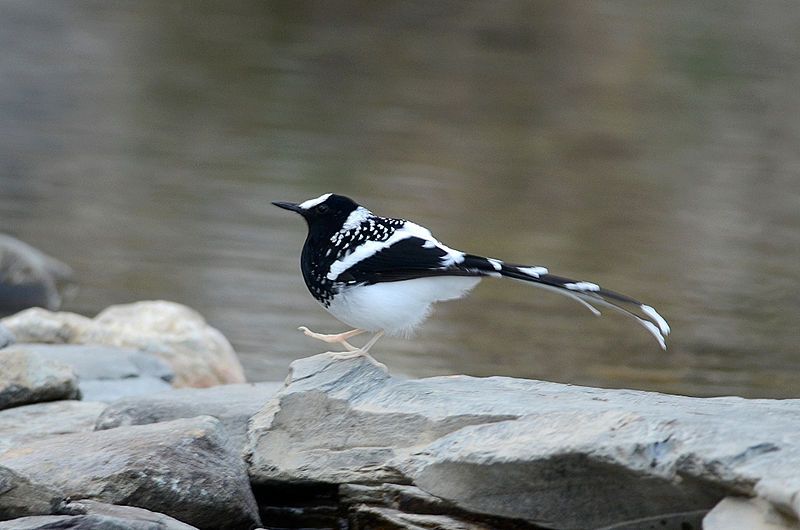
The spotted forktail is a species of bird found in the Himalayas and the hills of Northeast India, Bangladesh, Myanmar, and southern China including Yunnan.
It belongs to the family Muscicapidae, which is a family of passerine birds characterized by their small size and long tails. This species of bird is quite small, measuring only 25 centimeters in length, and is easily identifiable by its large tail.
The tail of the spotted forktail is a distinguishing feature, as it is much longer than its body and is marked with spots. In terms of behavior, the spotted forktail is a fairly shy and solitary bird.
It is usually found close to water sources, such as rivers, streams, and ponds. It forages for food on the ground and in low vegetation, where it feeds on insects and other small invertebrates.
During the breeding season, the spotted forktail builds a nest of moss and other plant material. The female lays two to three eggs, which the male and female take turns incubating. After hatching, the chicks are fed by both parents until they are ready to fledge.
The spotted forktail is a relatively common species, and its population is thought to be stable. It is not considered to be threatened or endangered and is listed as a species of least concern by the International Union for Conservation of Nature.
Although it is found throughout much of its range, its numbers may be declining due to habitat loss and degradation.
| Kingdom | Animalia |
| Phylum | Chordata |
| Class | Aves |
| Order | Passeriformes |
| Family | Muscicapidae |
| Genus | Enicurus |
| Species | E. maculatus |
11. Himalayan Woodpecker
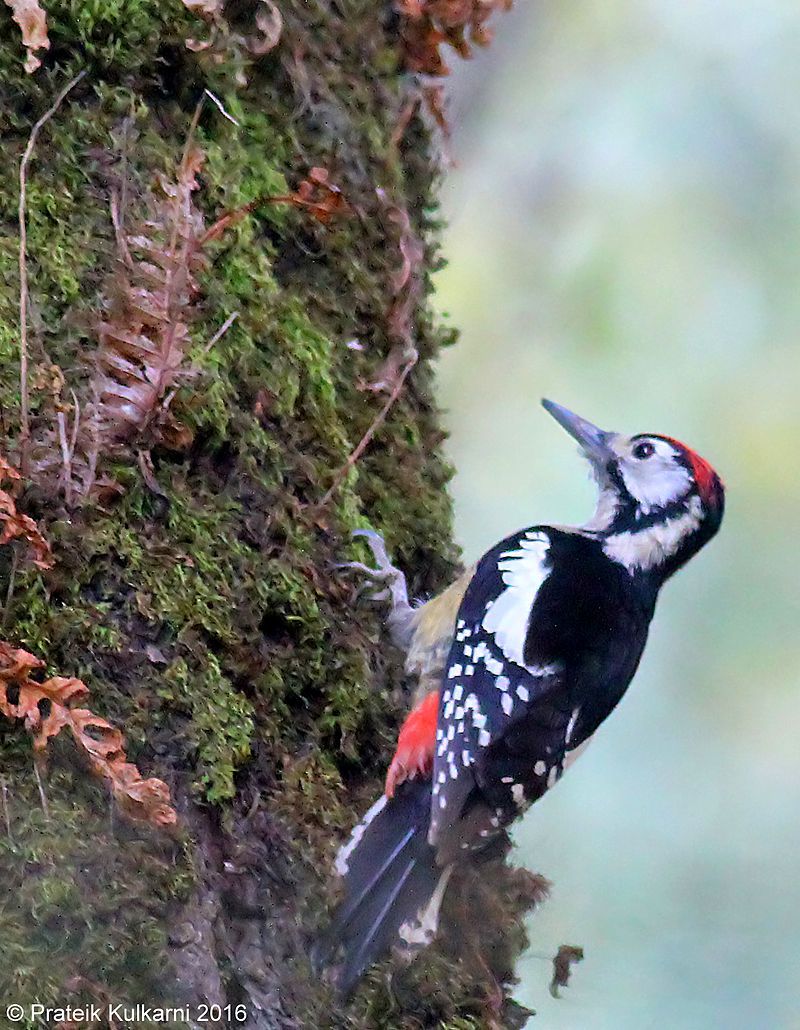
The Himalayan woodpecker is a species of bird that belongs to the family Picidae. It is most commonly found in the Himalayas and some of the surrounding areas of the Indian subcontinent, including Afghanistan, India, Nepal, Bhutan, and Pakistan.
Its natural habitats are mainly boreal forests and temperate forests. The Himalayan woodpecker is a species that inhabits the higher elevations of the northern regions of India, giving it the name Himalayan woodpecker.
It is usually found in forests, such as boreal forests and temperate forests. These forests are characterized by evergreen coniferous trees, such as pine, spruce, and fir trees, and have a cooler climate with cold winters and mild summers.
The Himalayan woodpecker is an important species in the region, as it plays an important role in the local ecosystem. It is an omnivore, feeding on a variety of insects, fruits, nuts, and seeds.
The woodpecker also helps to spread the seeds of the trees in the area, aiding in reforestation. The Himalayan woodpecker has a unique plumage that distinguishes it from other woodpeckers.
It has a black and white barred head and neck, a bright red crown, and a plain white underside. These birds are also known for their loud, distinctive call, which is often heard in the forests.
The Himalayan woodpecker is a species of bird that is both important and beautiful and is a vital part of the northern Indian subcontinent’s ecosystem.
Its presence in the region is essential for the health of the forests, and its unique plumage and call make it a pleasure to observe.
| Kingdom | Animalia |
| Phylum | Chordata |
| Class | Aves |
| Order | Piciformes |
| Family | Picidae |
| Genus | Dendrocopos |
| Species | D. himalayensis |
12. Black-and-Yellow Grosbeak
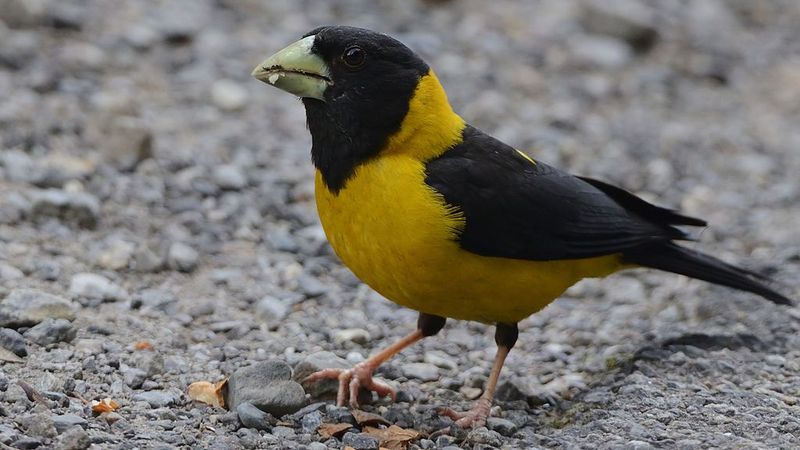
The black-and-yellow grosbeak is a beautiful bird species of the finch family, Fringillidae. It is native to the northern parts of the Indian subcontinent, primarily the lower and middle Himalayas.
This species has a wide range of distribution, including Afghanistan, India, Iran, Nepal, and Pakistan. Its preferred habitat is temperate forests, which provide a good environment for it to forage and breed.
The black-and-yellow grosbeak is characterized by its black-and-yellow plumage, which is an adaptation that helps it to blend in with its environment. It has a short, curved beak, which is adapted to eating seeds and other small items.
Its diet consists mainly of insects, berries, and small seeds. The black-and-yellow grosbeak is mainly active during the day, and it is often seen foraging for food in open areas.
It is not a vocal species, but it does produce a variety of soft, musical calls that can be heard from a distance. During the mating season, the males will establish territories by singing and displaying their feathers.
The black-and-yellow grosbeak is a fairly common species and its population is currently stable. It is not considered to be threatened by humans, and its numbers are not significantly declining.
However, it is affected by habitat loss due to deforestation, and it is also vulnerable to the effects of climate change. To help protect this species, conservation efforts should be focused on protecting its natural habitats and reducing the impact of human activities.
| Kingdom | Animalia |
| Phylum | Chordata |
| Class | Aves |
| Order | Passeriformes |
| Family | Fringillidae |
| Genus | Mycerobas |
| Species | M. icterioides |
13. Koklass Pheasant
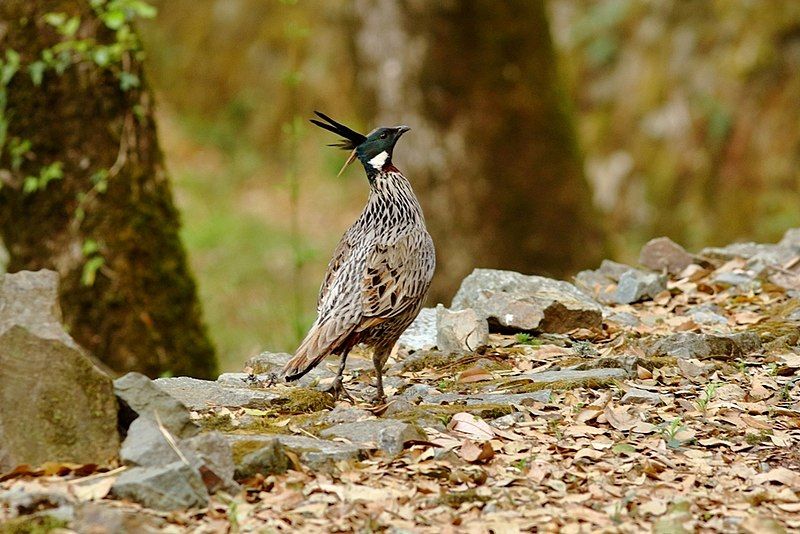
The koklass pheasant is a species of gamebird, belonging to the order Galliformes. They are closely related to progenitive grouse that existed during the Miocene, a period of time spanning from 23 to 5.3 million years ago.
Koklass pheasants are distantly related to pheasants but are more closely related to grouse and turkeys. This species is the only one in the monotypic genus Pucrasia. This means that it is the only member of its genus, and shares no common ancestor with any other species.
Koklass pheasants are found in the Himalayan region of South Asia, living in temperate forests and grasslands. They can usually be found in pairs or small groups, and they are considered vulnerable species due to their limited range and habitat fragmentation.
They are omnivorous birds, feeding on insects, fruits, and seeds. Their plumage is mostly brown with white mottling, and they have a distinctive crest of feathers on their heads.
Koklass pheasants are popular gamebirds for hunters, and their meat is considered a delicacy in some areas. They are also kept as ornamental birds in captivity.
As a species, they have an important role in their ecosystem, playing a part in the dispersal of seeds and helping to control insect populations.
| Kingdom | Animalia |
| Phylum | Chordata |
| Class | Aves |
| Order | Galliformes |
| Family | Phasianidae |
| Genus | Pucrasia |
| Species | P. macrolopha |
Conclusion
Birds in Jammu and Kashmir are a source of great beauty and diversity. They provide a rich source of food for both humans and other wildlife species. They also form an important part of the local culture and traditions.
Jammu and Kashmir are home to a wide range of birds, ranging from the majestic Himalayan griffon and the beautiful rose finch to the more common house sparrow and crow.
The region is a paradise for birdwatchers and naturalists alike, and is a great place to explore and appreciate the amazing diversity of the avian world.